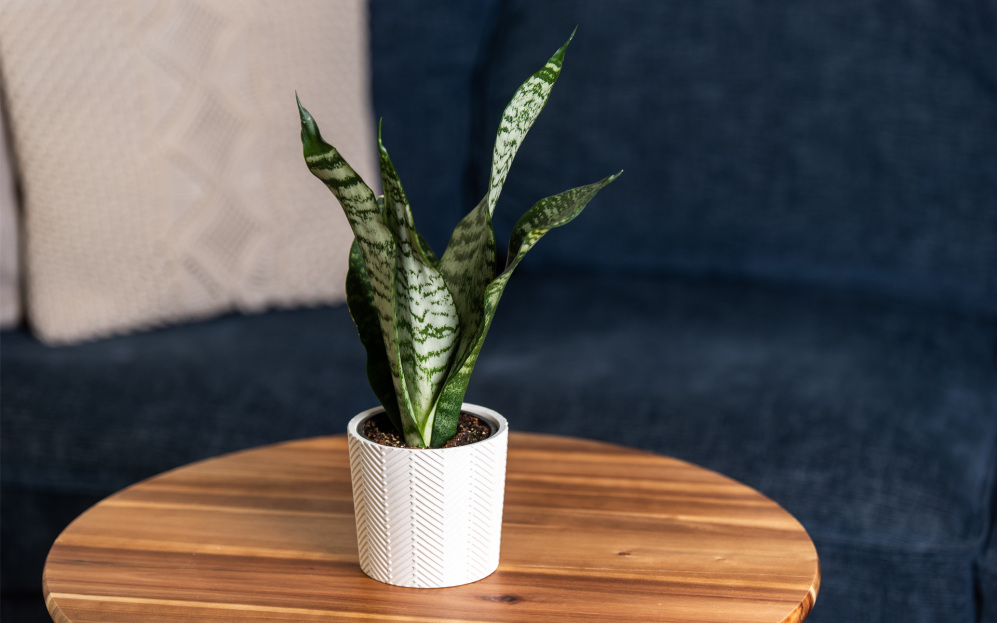
Sansevieria, also called Snake Plant or Mother-in-law's Tongue, is a well known indoor plant that is easy to care for and is valued for its attractive look and ability to purify the air.
Here's a guide on how to care for Sansevieria:
Sansevieria prefers bright, indirect light but can also tolerate low light conditions. However, it may grow more slowly in low light. Avoid direct sunlight, as it can scorch the leaves.
One of the most crucial aspects of Sansevieria care is proper watering. Allow your Snake plants soil to dry out between waterings, as overwatering can lead to root rot. Water moderately, usually every 2-4 weeks based on the surrounding conditions and the dampness of the soil. If watering into a pot without drainage holes, be sure to discard any excess water at the bottom of the outer pot to ensure your plant doesn't get root rot.
Sansevieria thrives in temperatures ranging from 60-85°F (16-29°C). Its ability to withstand low humidity levels makes it adaptable to a variety of indoor settings.
Repot your Sansevieria every 1-2 years or when the plant has outgrown its current container. Choose a container that is slightly bigger (1-2") than the existing one and make sure it has holes for drainage at the base.
Sansevieria is not heavy feeder, so it doesn't require frequent fertilization. Administer a well-balanced, watered-down fertilizer once every one to two months throughout the growth period (spring and summer). Avoid fertilizing during the dormant winter months.
Trim off any yellow or damaged leaves using clean scissors or pruning shears. This will help maintain the plant's appearance and health.
Sansevieria is relatively resistant to pests and diseases, but overwatering can lead to issues like root rot. Be vigilant for pests like mealybugs or spider mites, particularly if the plant is under stress.
Propagation of Sansevieria can be achieved through division or leaf cuttings. To propagate by leaf cuttings, cut a healthy leaf into several sections and plant them in a well-draining soil mix or in a jar of water until it roots. Plant the cutting in soil and keep the soil lightly moist until new growth emerges.
Unfortunately Sansevieria's are not pet safe. They are considered toxic to Pets, if consumed, according to ASPCA
Occasionally clean the leaves with a moist cloth to eliminate dust and maintain their shiny appearance.
By following these care tips, you can enjoy healthy and vibrant Sansevieria plants in your indoor space.